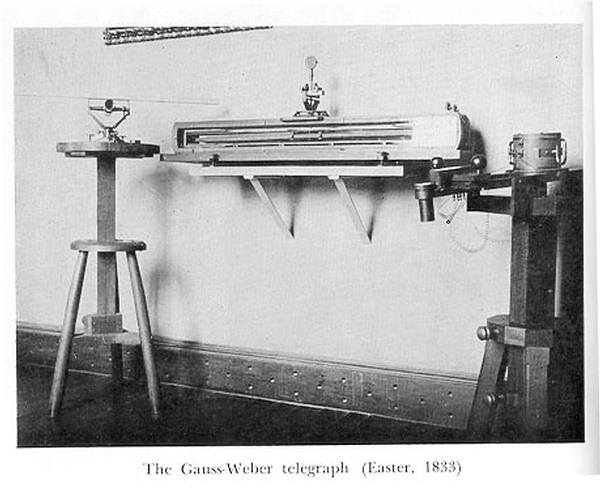The Gauss-Webber Telegraph
1833
Karl Gauss (mathematician) and Wilhem Webber (physics professor) sought to solve a puzzle: how to send all letters of the entire alphabet using only one circuit wire? The aim was to be able to communicate from the observatory to the laboratory so they could collaborate on their research. [[ Michael Faraday ]] had discovered electromagnetic induction just two years prior, which Gauss applied to create an induction-powered signal transmitter.
Utilizing a galvanometer, (electricity and magnetism)…
horizontally oscillating magnetic bar in a wire spool, the rashes of which were observed as a result of the power surges by means of a telescopic sight through a mirror rotating with the magnetic bar
electric current passing through a coil creates a magnetic field point to the center of the loop to deflect a needle.
Reversing the current using a switch, meant that the needle could deflect left and right, providing two different signaling events (symbols).
Shorter symbols were assigned the most common letters (e.g., the letter a was assigned a single right deflection, and the letter e was assigned a single left deflection).
Less common letters assigned longer deflections, such as k which was three right deflections.
Constraints to this method were the low speed of transmission and the slow Signaling Rate — the number of deflections per minute that could be accurately transmitted and received.
Needle telegraphs were improved upon by fastening a magnet on the outer side of the coil so that the needle would settle to its neutral position instead of flailing around after each deflection.
